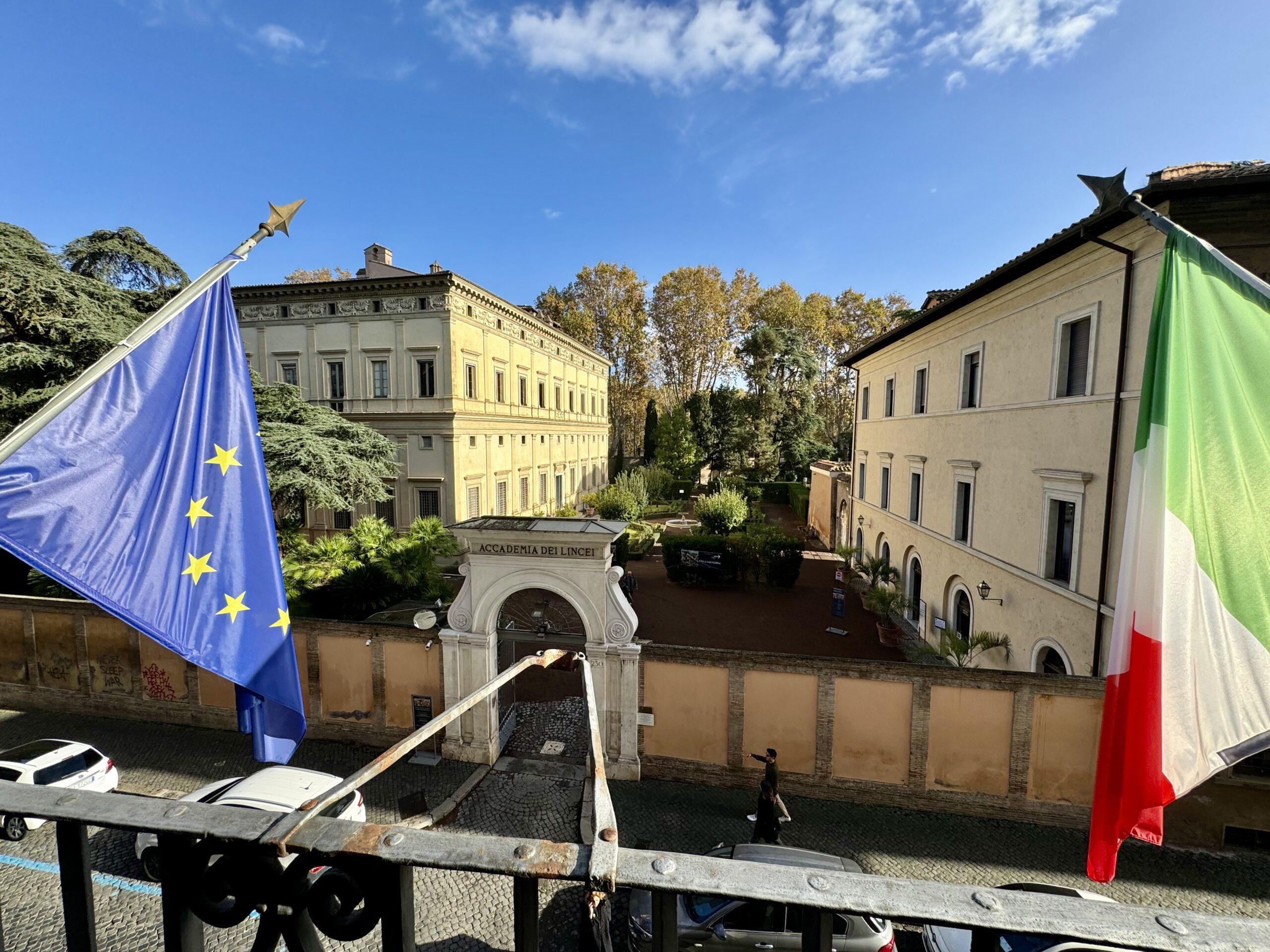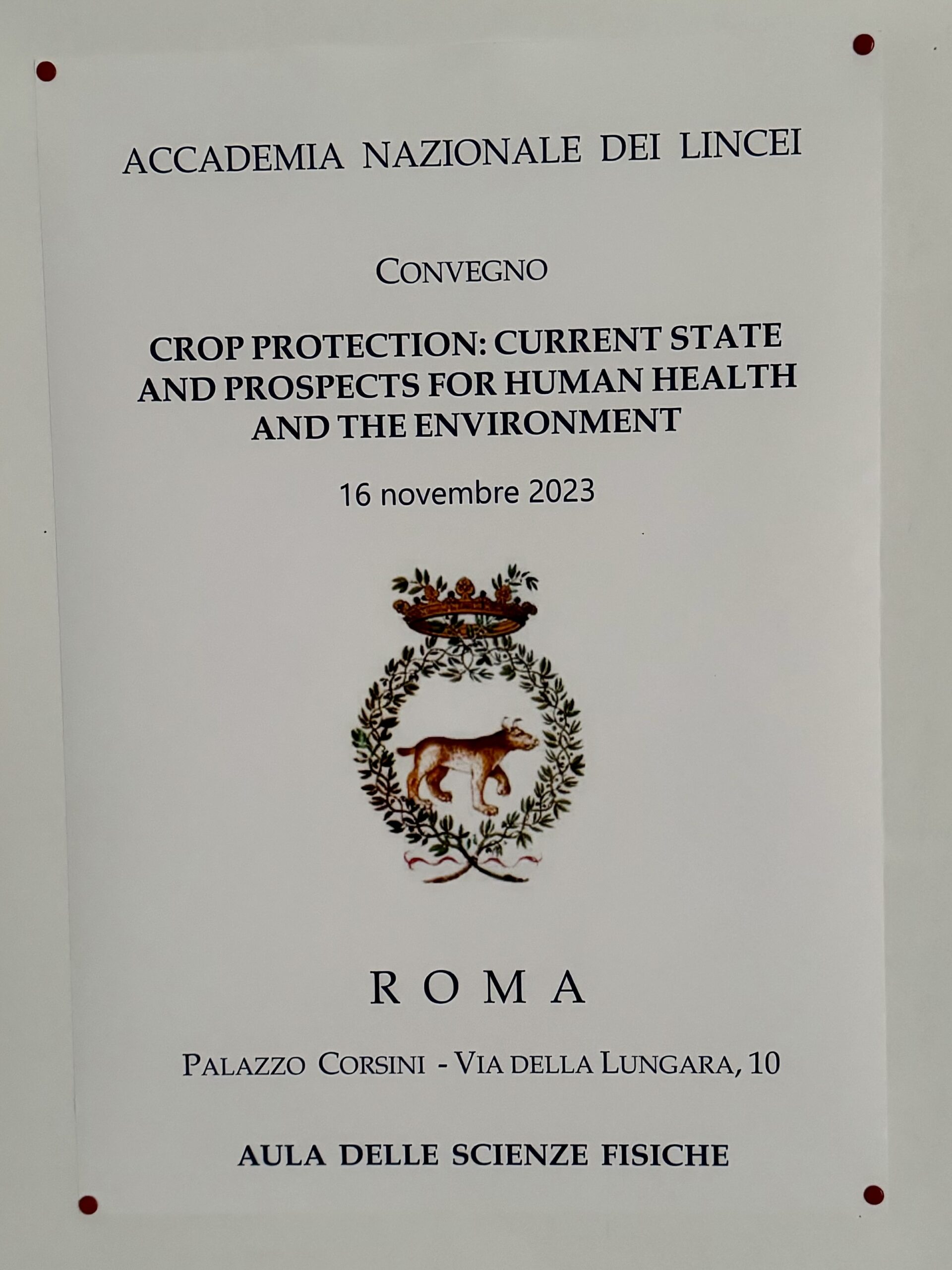
Photo of the Accademia Nazionale dei Lincei in Rome

Photo of publication titled “Crop protection: Current State and Prospects for Human Health and the Environment”

Marc Schetelig, Professor at the
Justus-Liebig-University Giessen
©JLU



Leveraging modern genetics to fine-tune SIT
13 December 2023
In a presentation at the Accademia Nazionale dei Lincei in Rome, REACT coordinator Marc Schetelig delved into cutting-edge research exploring novel genetic markers in SIT applications.
A few weeks ago, REACT coordinator Prof. Marc Schetelig was invited by the Italian Accademia Nazionale dei Lincei to present the project at a conference entitled ‘Crop protection: Current state and prospects for human health and the environment’. The Academy looks back on over four hundred years of history. Founded in 1603, today it is the Italian National Academy of Sciences, based in Palazzo Corsini in the Trastevere district of Rome. The impressive baroque palace provided the setting for a lookout into the future of crop protection.
Today, European food production relies on chemical protection of crops from pests and diseases to a huge extend. Unfortunately, the widespread, and often uncorrected use of these molecules is the source of pollution: agro-chemicals can contaminate water, soil, and air, cause biodiversity loss, and promote pest resistance. Furthermore, from an economic perspective, the purchasing and application of protectants is expensive and can affect the competitiveness of the agricultural sector and unwise users.
SIT as a pillar of pesticide reduction
In recent years, sustainable agricultural practices have gained significant attention, as concerns about environmental degradation and chemical over-dependence continue to grow. Marc Schetelig shed light on genetic pathways for optimised Sterile Insect Technique in sustainable agriculture and drew a picture of the foundations for plant protection beyond chemicals.
The research conducted by Prof. Schetelig and his team at the Institute for Insect Biotechnology at the Justus Liebig University in Giessen, focuses at the Sterile Insect Technique (SIT), which he argues „stands out as a promising biotechnological approach to pest control, reducing the need for chemical pesticides.” Traditionally, SIT involves the release of sterilized male-only populations of pest insects to mate with wild females, resulting in non- viable offspring and subsequent population decline. However, methodologies to separate males and females before sterilisation and release have only been developed for a few species and rely primarily on uncharacterised genetic markers identified through classical genetics.
In his talk in Rome, Schetelig delved into cutting-edge research exploring novel genetic markers as alternatives to building sex separation strains. By leveraging modern genetics, the REACT approach seeks to fine-tune SIT, optimizing the fitness of released insects while ensuring effective population control. These genetic strategies could result in benefits for crop protection and yields, and thus could be a valuable contribution to a sustainable agriculture of the near future.
